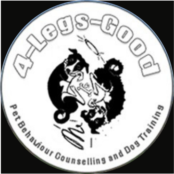
Dogs are more ‘in the moment’ than us and I can’t help but be reminded of this when I’m walking our dogs on a hot day and Rover chooses to simply stop in the shade rather than rushing home. He doesn’t have to get home to get ready to go to work. Dogs are perfectly content to place themselves in the most comfortable situation available to them at that moment – ‘it’s hot, I’ll go under a tree’. Sometimes I truly struggle to imagine that they have no need to worry about the things that I worry about. Do they really not think about climate change, Covid 19 or whether they have left the kettle on the hob? No! Dogs are drawn to what is enjoyable and comfortable; unless a dog is distressed for some reason, if there is any fun to be had, that is where you will find them. They would naturally choose to gravitate towards what makes them feel good not what makes them feel bad.
I believe that this accounts for much of why people choose to keep pets, they provide a connection to nature and a simpler way of being. Pets help us to be more present and being present when interacting with your dog will help you connect with them and yourself more completely. I think this helps explain the ‘covid phenomenon’ and why seemingly everyone suddenly wants a pet.
Developing a mindfulness practice for yourself and your dog will have immense benefits for both of you – and the wider world. My understanding is that if a person has a mindfulness practice, they can use their own ‘being present’ to connect better with their dog and in turn, having a dog can help people develop a mindfulness practice as dogs being more in the moment is contagious. Secular mindfulness guru, Jon Kibbut Zinn specifically suggests being ‘present’ when interacting with your dog in his lovely little book for people who don’t like to be told what to do ‘wherever you go, there you are’.
I have realised that there are strong parallels between what I do in my work with animals and mindfulness training for humans. Basically, my day job is teaching dogs to teach themselves to relax. This training needs to be started in an environment where both the trainer and dog are already relaxed, far away from any problem situation. People too, need to start to learn to relax in situations where, we too, are already relaxed, not in situations where we are already feeling stressed, such as just before a job interview!
Teaching dogs to teach themselves how to be relaxed is only going to be effective if the dog is set up to succeed by the owner providing for their needs within a predictable routine. I ask clients to praise their dogs many times a day when they appear settled and relaxed thereby ‘shaping’ more settled and relaxed behaviour. As a result, certain positions and locations become automatic cues for relaxation through capitalising on the process of ‘classical conditioning’ whereby dogs (or their owners) develop a ‘positive emotional response’ to these locations and positions.
This is why I call my ‘go to your bed’ exercise the ‘magic mat’. If the bed is introduced so as the dog makes a ‘positive emotional response’, then the simple act of going to the bed will trigger physiological and psychological relaxation. Any exercise that you practice where your dog is happy and relaxed will engender a ‘positive emotional response’.
This is mindfulness for pets – hell, you can even teach a dog to ‘take a breath’. See Karen Overall’s ‘take a breath’
When space is made and there is time to do nothing, the autonomic nervous system switches to ‘rest and digest’. Stopping doing, paying attention and noticing what is happening in the moment teaches us to teach our bodies (and our dogs bodies) to reset and calm physiologically. Quiet time will calm a dog and a person. I once crept into a big dog crate in the kitchen to pet our dog, Daisy. Of course, my partner, Tim, shut the door. Rather than immediately protesting to get out I thought ‘if I stay here I will have to do nothing, eventually frustration will give way to resignation and I will calm’. Later that week, I went to see a driven business man, his wife and their two French Bulldogs and suggested that the man spend 45 minutes in a crate every day. His wife thought it a very good idea!
Modern people are ‘distracted from distraction by distraction itself’! This seems to be ever more the case with long working hours, the internet and smart phones leaving almost no time without constant stimulation. We need to learn to stop doing and simply be to allow ourselves and our dogs to calm. ‘Noticing’ what is going on in the moment leads to self-awareness and with it the ability to change our thought patterns and behaviour. This, of course, is like peeling an onion and an on-going process, but engaging in mindfulness practice will allow our nervous systems to reset, resulting in correspondingly more positive emotional states and benefits for ourselves, our pets and other family members and from here – the universe!
See follow on article ‘mindfulness for dogs’
